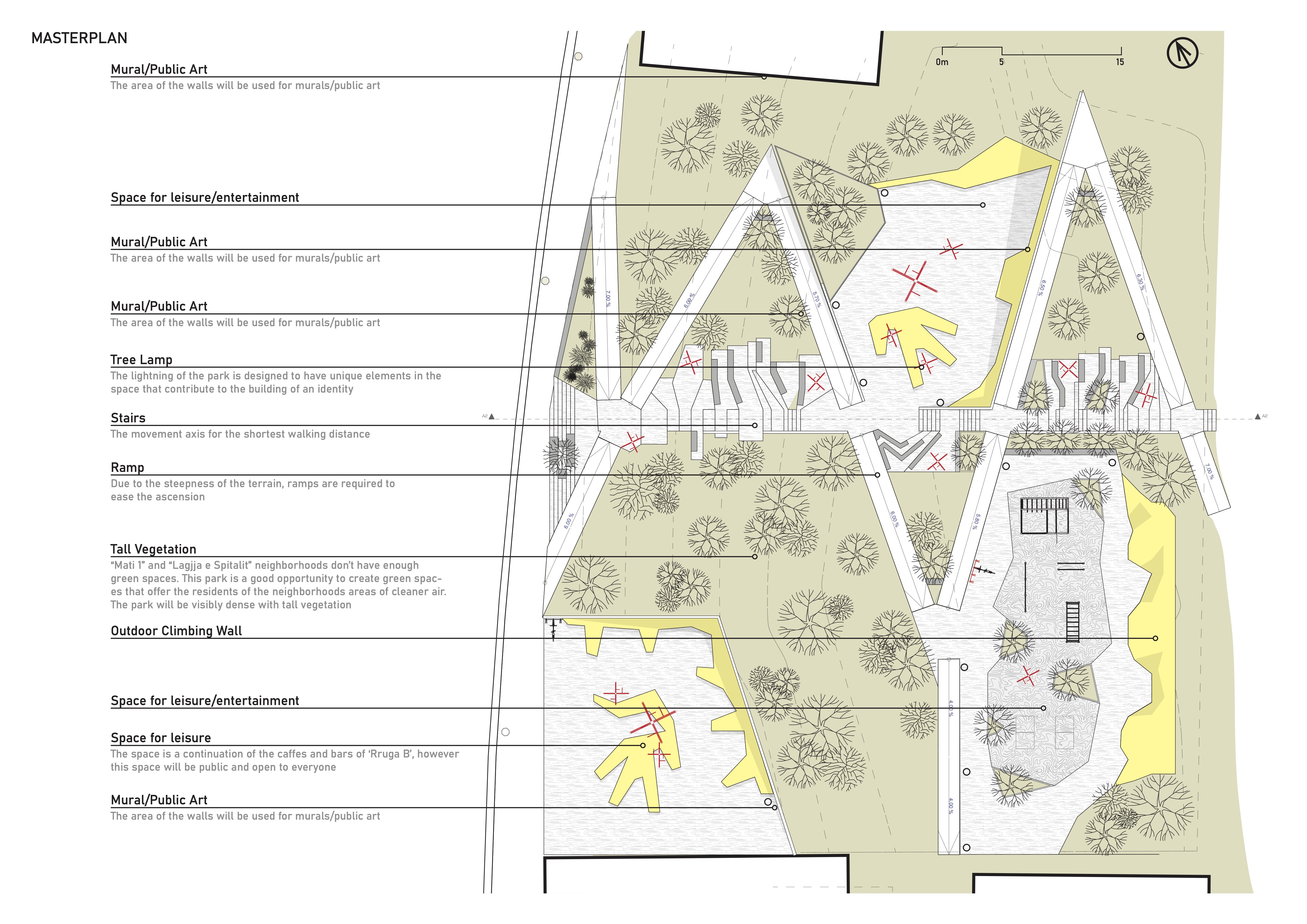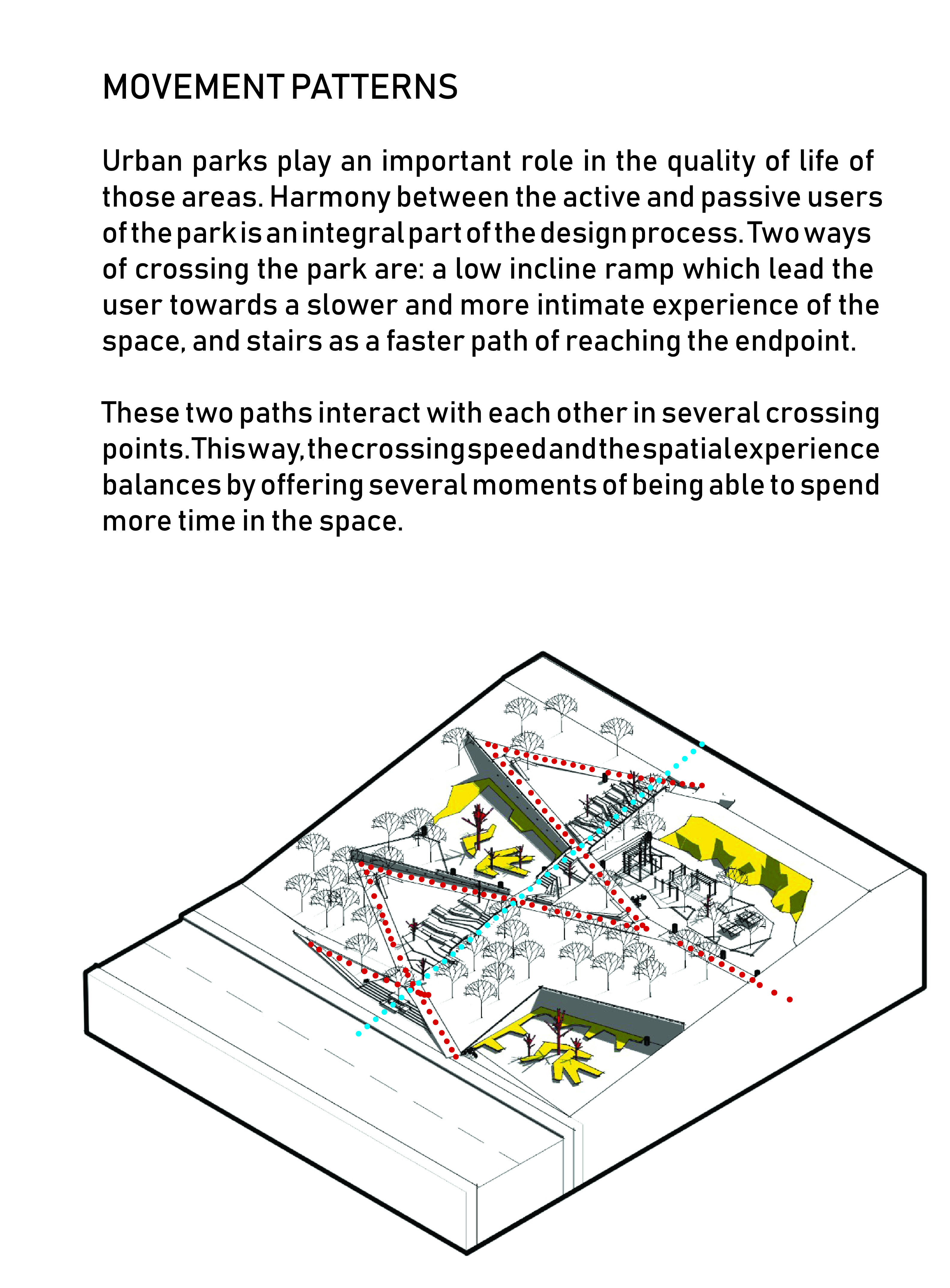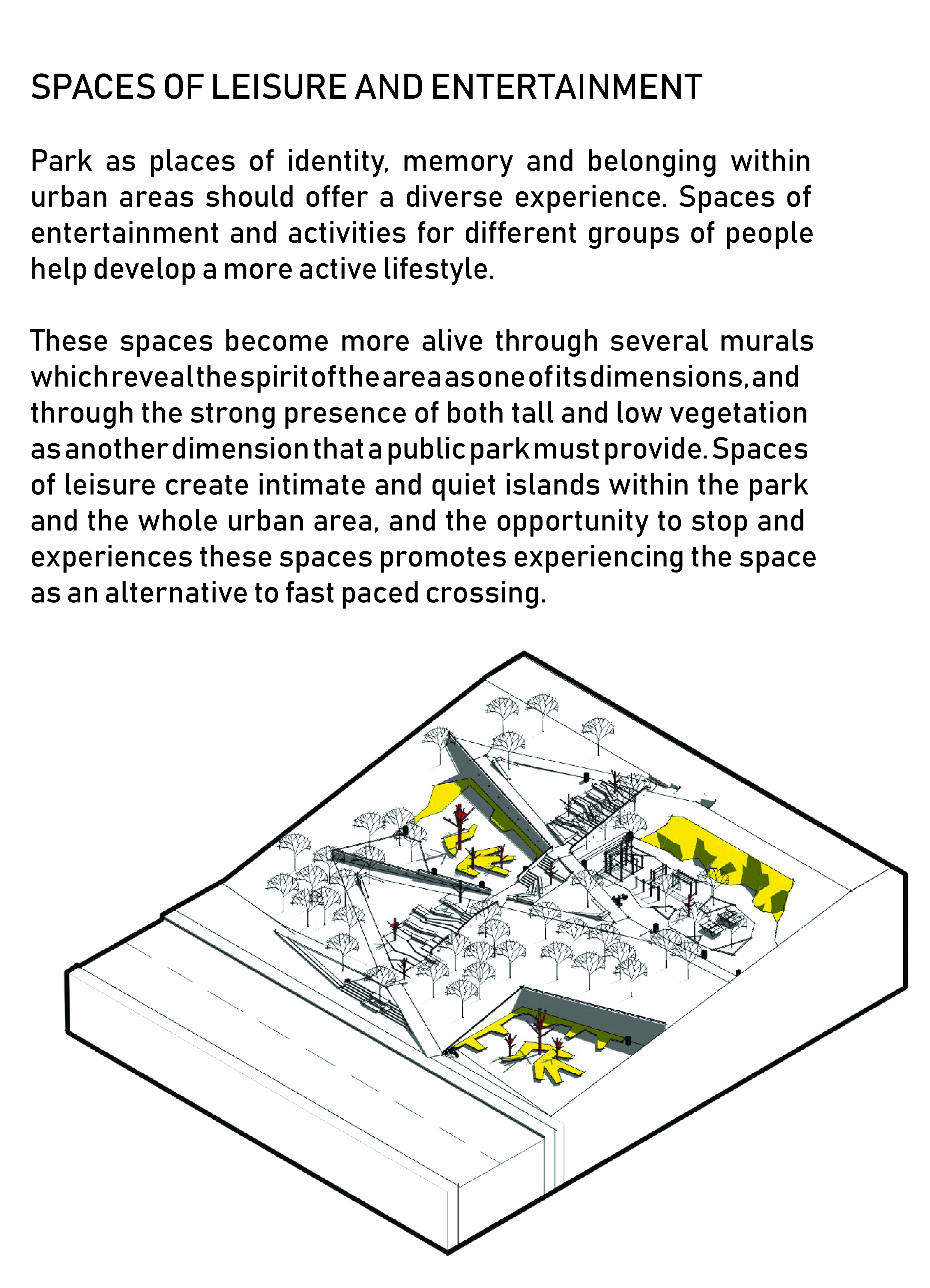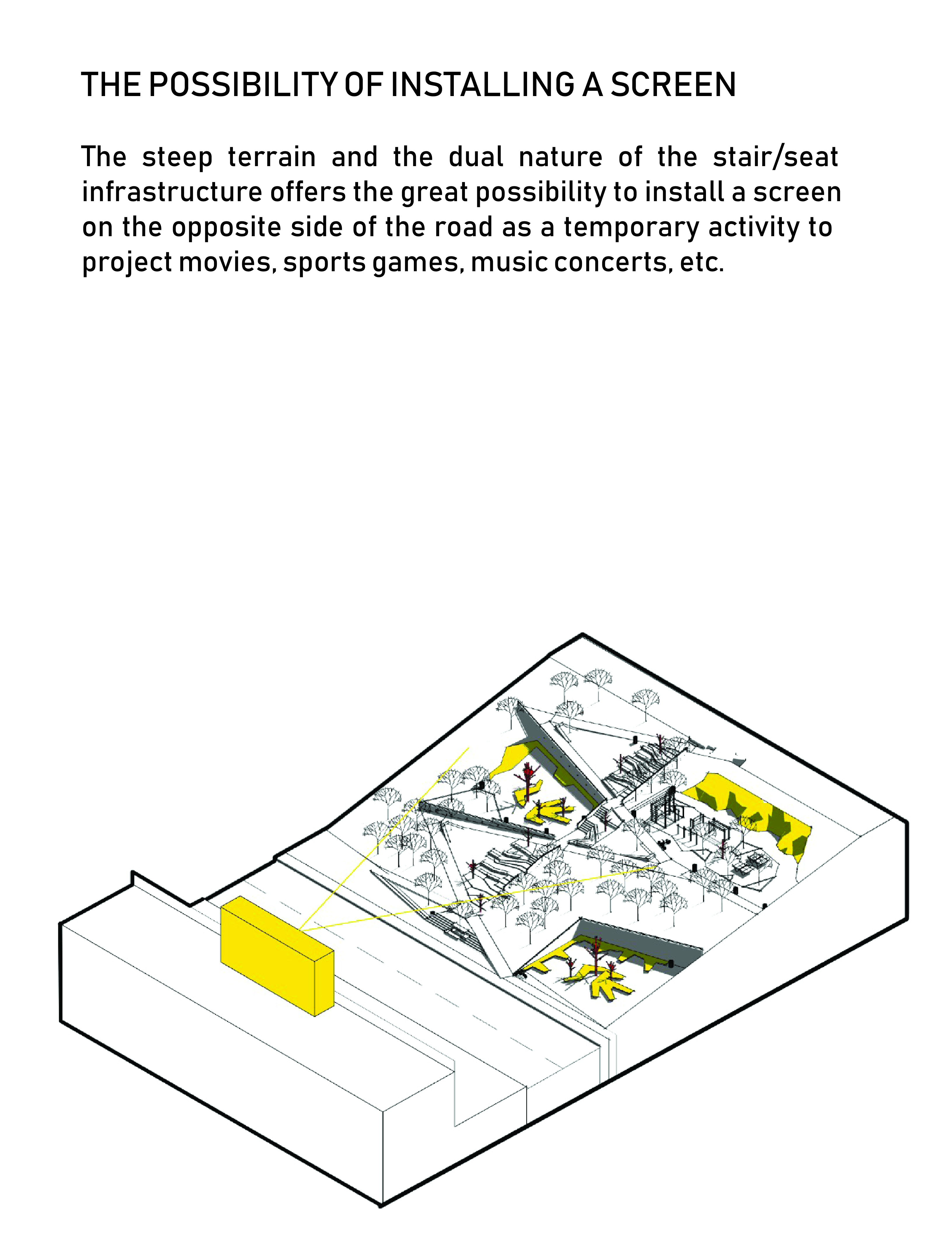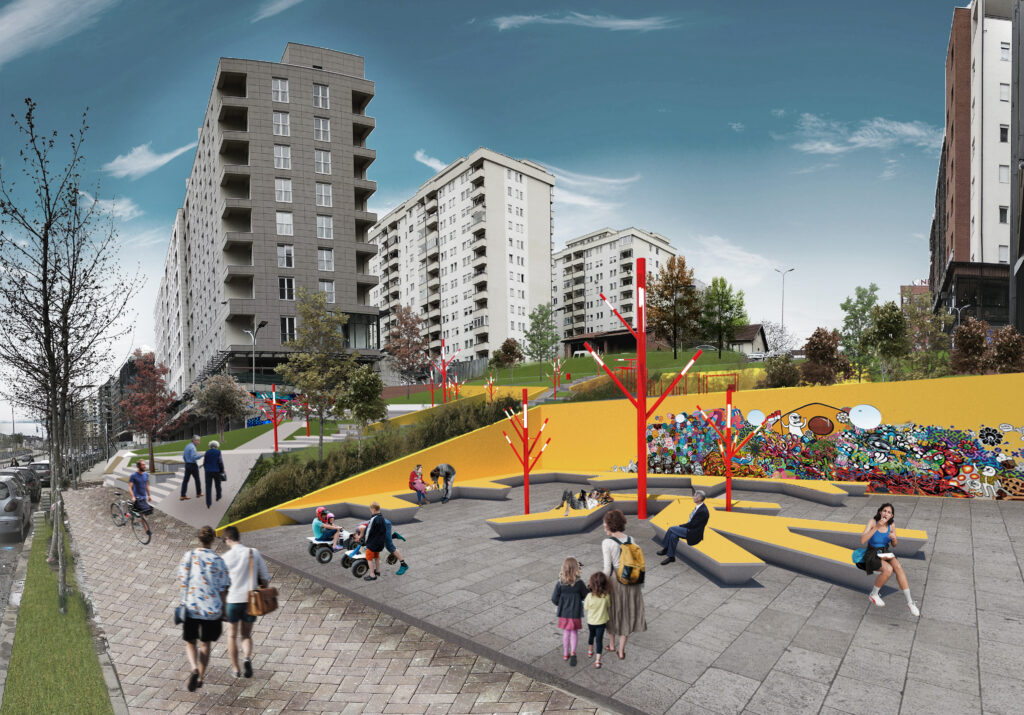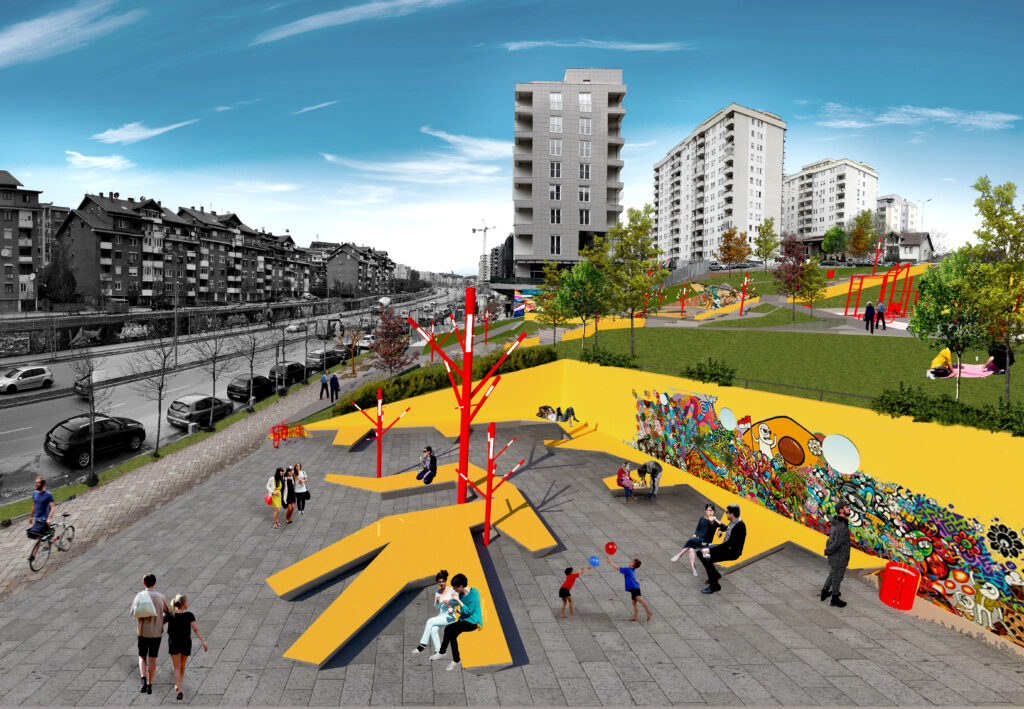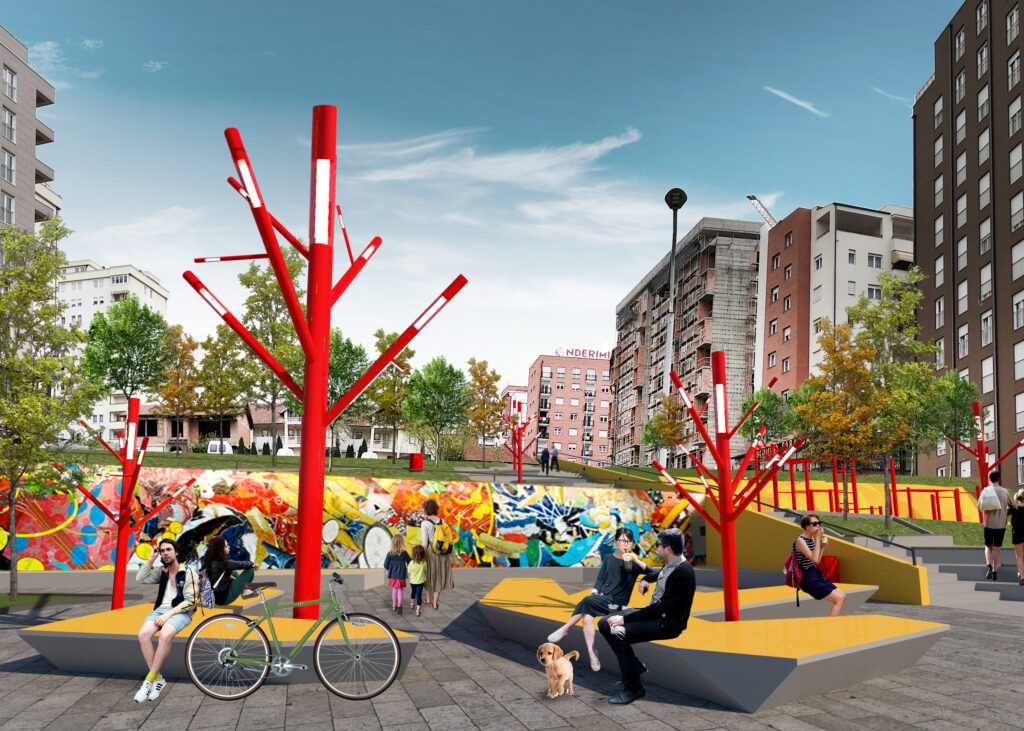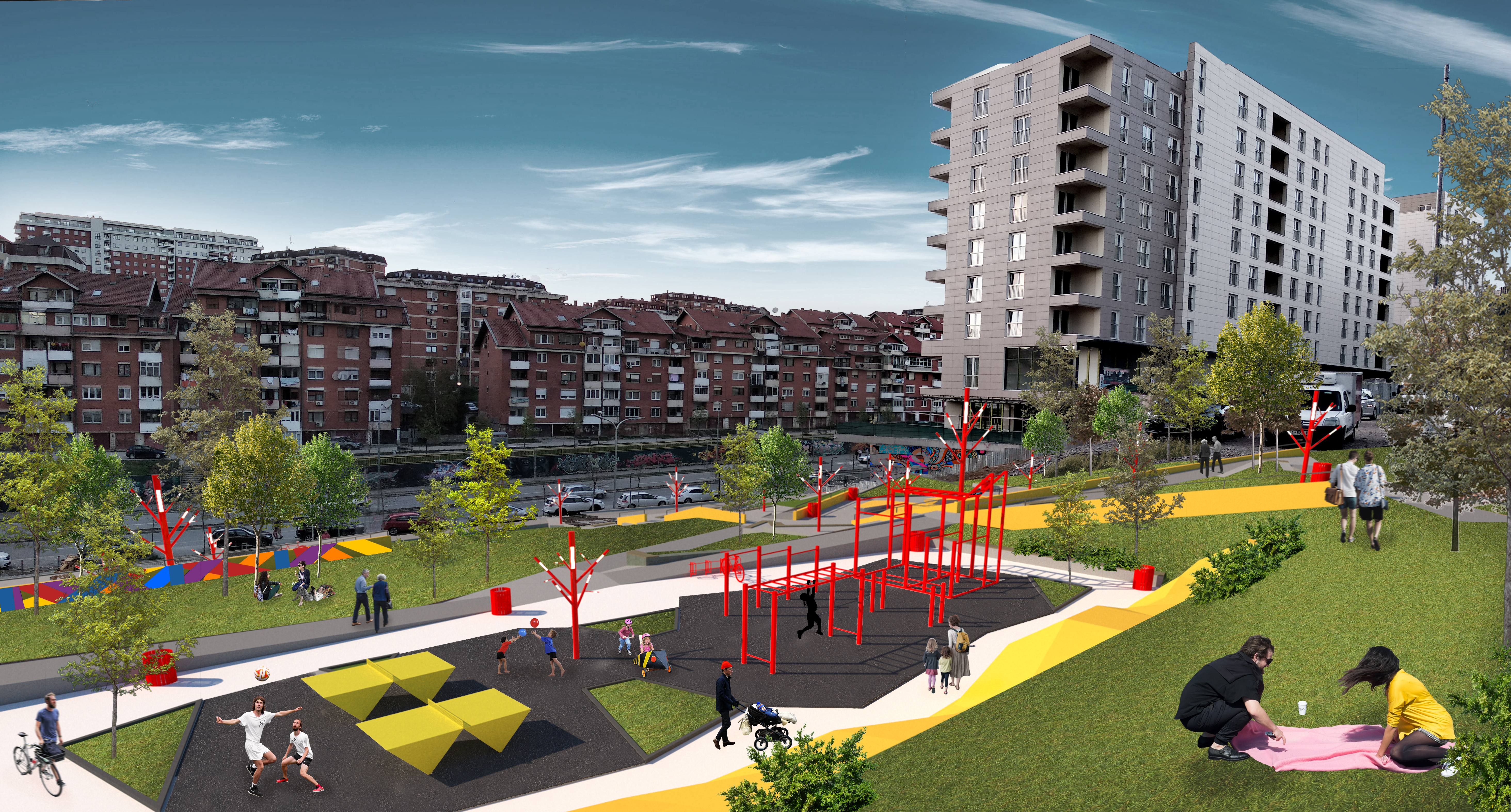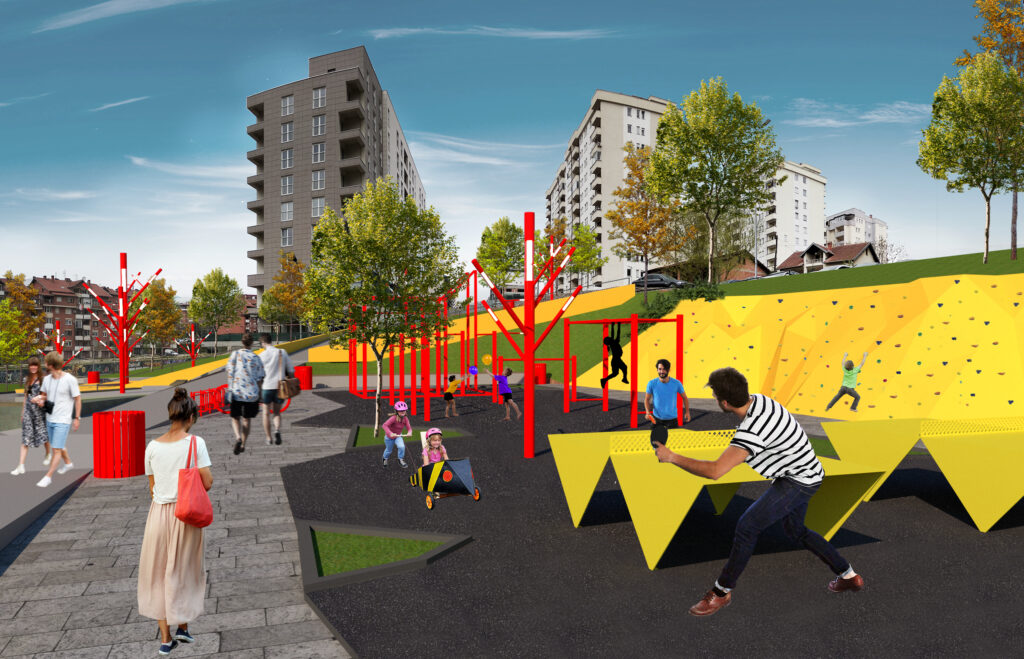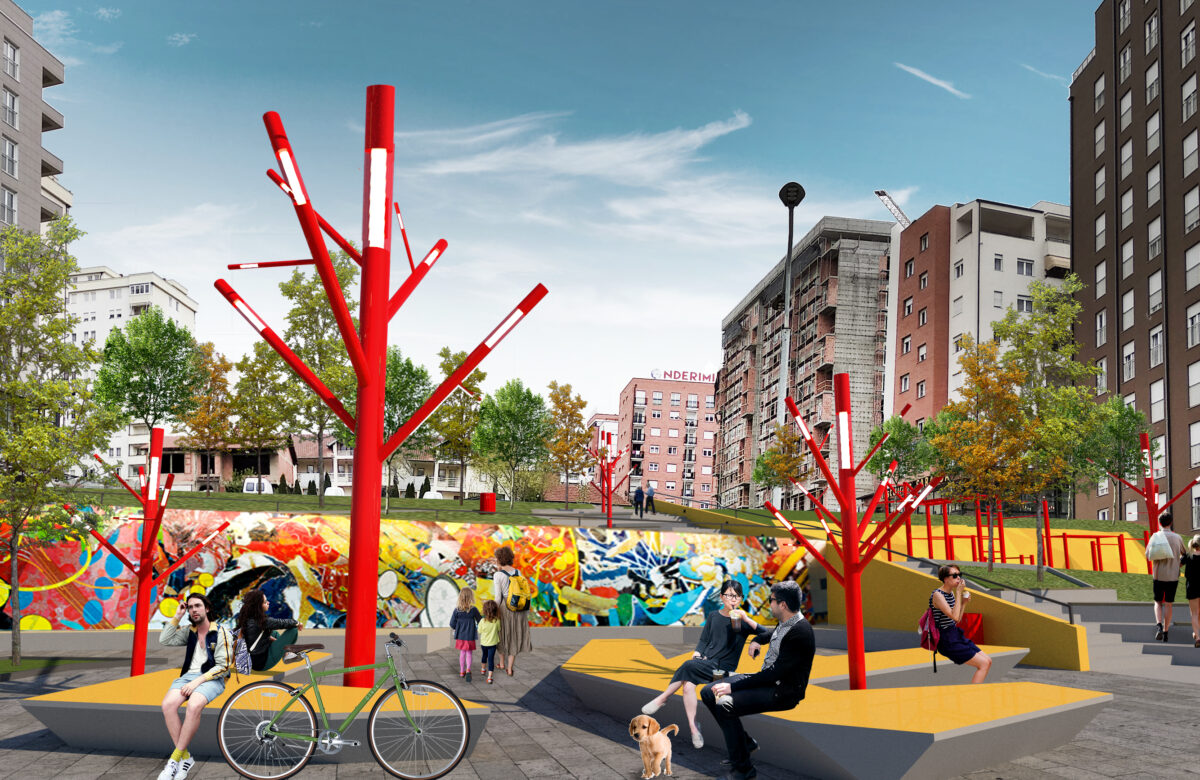Public spaces play an important role in creating vibrant and connected communities. They provide opportunities for people to interact, relax, and engage in a variety of activities. Unfortunately, not all neighborhoods have access to such spaces. One such neighborhood is Mati 1, which in terms of public space availability is considered one of the poorest neighborhoods in the city. To help this issue, Architecture for Humans proposed an urban intervention for the ‘Rruga B’ public place, which can potentially transform an abandoned area into a flourishing public park.
The proposal suggests creating a public place that caters to different age groups and offers various activities. The space is divided into three main clusters – leisure, entertainment and health. The leisure cluster includes seating areas, green spaces, and a small amphitheater. It provides opportunities for people to relax, read, or socialize with each other. The play cluster includes a playground and a basketball court. It is designed to attract children and teenagers and encourages physical activity and socialization. The health cluster includes exercise equipment, a running track, and a small garden. It provides opportunities for people to engage in healthy activities and spend time in nature. Due to the lack of green spaces in the neighborhood, this park is a good opportunity to create new green spaces that would offer the residents of the neighborhood and the users of the park, areas of cleaner air. Therefore, the proposal includes a variety of tall and low vegetation to be planted and maintained the in the park.
Another important aspect of the proposal is accessibility. Due to the topography of the site, specifically the steepness of the terrain, one of the key goals of our design was to make sure that the space would be accessible by any category of users. Therefore, the space is designed to be inclusive with ramps and stairs that are incorporated to make ascending and descending of the public place accessible to anyone. This ensures that the space is usable by people with disabilities or limited mobility, making it truly an inviting and gathering space for anyone.
Since we people that public spaces can also serve as strong anchors of identity the designers have incorporated uniquely designed lamps into the lightning design of the park. The lamps are not only functional but also add aesthetic value to the area, creating a warm and inviting atmosphere, making the space more welcoming and safe for people to use.
